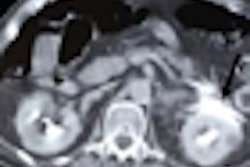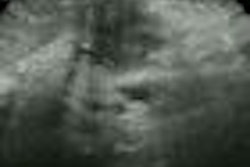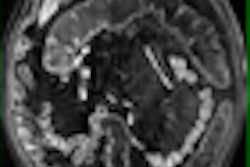
NEW YORK (Reuters Health), Jan 22 - Higher blood pressure does not increase the incidence of hemorrhagic transformation and several other severe CT findings after acute stroke, according to researchers in Europe.
"The management of blood pressure in acute ischemic stroke remains an enigma, and widely held views (e.g., that hemorrhagic transformation follows high blood pressure) are not supported," Dr. Philip M. W. Bath from the University of Nottingham, U.K., told Reuters Health.
Dr. Bath and colleagues assessed the relationship between blood pressure and CT findings using data from 1,489 patients in the Tinzaparin in Acute Ischemic Stroke Trial (TAIST), which previously showed high blood pressure to be associated with poor outcome.
Patients with a higher systolic blood pressure were more likely to have an abnormal CT scan at baseline, but this was related to an expected increase in leukoariosis and the presence of old infarction, the authors report in the January issue of Stroke.
Evidence of acute infarction, including such early signs as loss of gray-matter and white-matter differentiation, mass effect, and hemiedema, was more common in patients with lower (not higher) blood pressure.
On day 10 CT scans, patients with higher baseline blood pressure were more likely to have an infarct, the researchers note, but hemorrhagic transformation, mass effect, and edema were not significantly related to blood pressure level.
Similarly, death before day 10 was not significantly related to blood pressure.
"There are currently large-scale ongoing trials in this area (SCAST and ENOS) that should provide robust data on which to base clinical practice, as well as the opportunity to prospectively analyze CT data in relation to blood pressure, including the influence of changing blood pressure in acute stroke," the investigators say.
Dr. Bath said that the results of these trials are not expected for several years -- at least 2012 for ENOS.
In the meantime, Dr. Bath said, "Physicians should not treat high blood pressure in acute ischemic stroke without better evidence and, ideally, they should randomize their patients in ongoing trials of blood pressure management."
Stroke 2009;40:41-46.
Last Updated: 2009-01-21 17:57:09 -0400 (Reuters Health)
Related Reading
Low-dose intraventricular tPA ups survival substantially in hemorrhagic stroke, May 15, 2008
Copyright © 2009 Reuters Limited. All rights reserved. Republication or redistribution of Reuters content, including by framing or similar means, is expressly prohibited without the prior written consent of Reuters. Reuters shall not be liable for any errors or delays in the content, or for any actions taken in reliance thereon. Reuters and the Reuters sphere logo are registered trademarks and trademarks of the Reuters group of companies around the world.



















